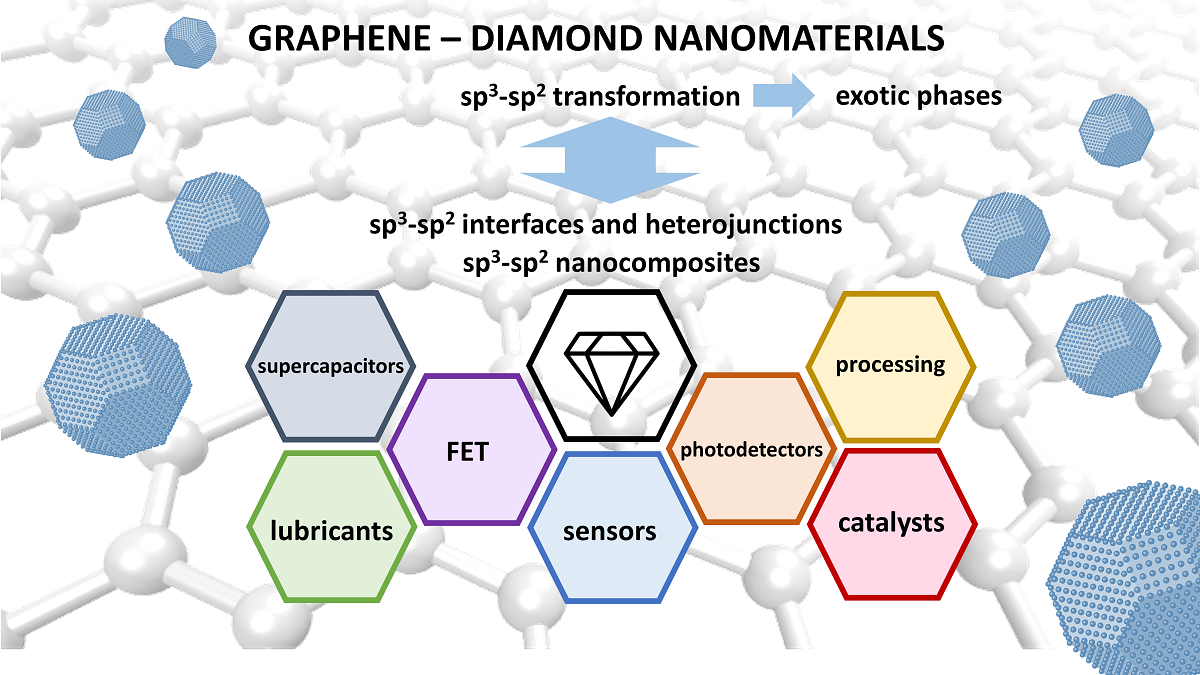Carbon nanomaterials with a different character of the chemical bond – graphene (sp2) and nanodiamond (sp3) are the building bricks for a new class of all-carbon hybrid nanomaterials, where the two different carbon networks with the sp3 and sp2 hybridization coexist, interact and even transform into one another. The unique electronic, mechanical, and chemical properties of the two border nanoallotropes of carbon ensure the immense application potential and versatility of these all-carbon graphene – diamond nanomaterials. The review gives an overview of the current state of the art of graphene – diamond nanomaterials, including their composites, heterojunctions, and other hybrids for sensing, electronic, energy storage, and other applications. Also, the graphene-to-diamond and diamond-to-graphene transformations at the nanoscale, essential for innovative fabrication, and stability and chemical reactivity assessment are discussed based on extensive theoretical, computational, and experimental studies.

